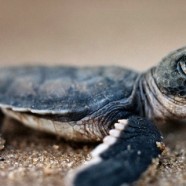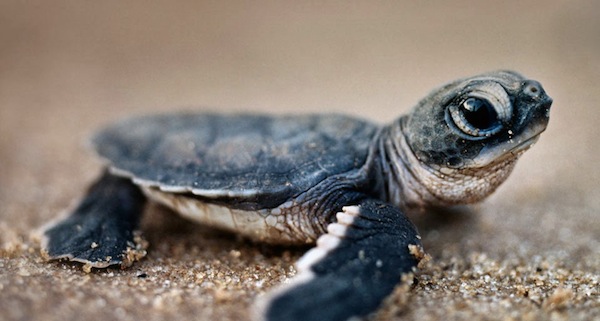LED Lighting Installation Is Helping Save Baby Sea Turtles
A unique project in coastal Florida uses LED lighting to help young hatchlings avoid danger and find their way to the ocean. Led by the Sea Turtle Conservancy, the installation addresses a long-standing problem that has grown steadily worse over the past 30 years. This latest project joins human-centric and grow lights on an expanding list of fascinating biologic applications of LED lighting.
As first reported in Scientific American, the installation specifically helps new sea turtle hatchlings find a direct path to ocean safety. Hatchlings typically emerge from their eggs in late afternoon or early evening, crawling up through sand from about 50 centimeters below the beach surface. They instinctively head for the soft lights on the ocean horizon, guided by moon and star reflections on the water. But this natural light is now eclipsed by the hotels, homes and restaurants that dominate today’s beachfront zones. The young turtles quickly become disoriented, often heading in the wrong direction. It’s a fatal mistake, as they can easily die of dehydration, get run over by cars or be eaten by inland predators. The situation is a significant threat to the survival of at least three endangered sea turtle species.
Florida is home to 90 percent of sea turtle nesting in the U.S., and it is estimated that tens of thousands of hatchlings are lost each year. The Sea Turtle Conservancy (STC) has thus targeted this coastal area for a series of lighting retrofits aimed at reducing disorientation. So far, numbers prove that this LED lighting installation is helping save baby sea turtles.
The retrofit has other benefits as well: LED lighting uses a fraction of the energy consumed by other lighting technologies, and lasts for several years with little to no maintenance costs. Further, residents and business owners feel LEDs produce a more visually appealing light, which the STC feels can actually increase safety in local areas.
To date, the STC has completed over 80 lighting retrofit installations on hotels, resorts, and other major properties. Hatchling disorientations in many of these areas have fallen from hundreds each year to zero. The plan is to execute these retrofits wherever possible, and continue educating residents as to how they can help. Local stores have even begun selling “turtle safe” LED lighting that is certified as wildlife friendly by the Florida Fish and Wildlife Conservation Commission.
The key is apparently using LED lights that operate at a specific wavelength, with a lower level of overall brightness (lumens). Years ago, similar attempts were made using standard sodium lights, but this technology is incapable of generating the direct, narrow color spectrum that LEDs can be designed to produce. Along with generating the perfect wavelength/lumen combination, the LED fixtures themselves are also directed downward and angled away from the beach, further reducing the possibility of turtle confusion. These installations have reduced or completely eliminated disorientations in the retrofitted areas, and turtles have even begun nesting at sites they avoided in the past.
Much of the funding for this initial round of retrofits came from criminal fines that were assessed as a result of the 2010 Deepwater Horizon oil spill, which affected an estimated 100,000 sea turtles. Additional funding was provided by Deepwater owner British Petroleum, as well as the Gulf Environmental Benefit Fund.












